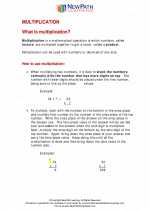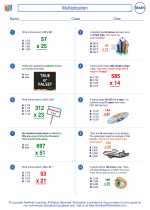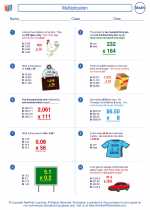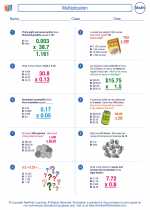Cubic Number Patterns
A cubic number, also known as a perfect cube, is a number that can be expressed as the product of an integer with itself, and then multiplied by itself again. The cube of a number n is denoted as n3. In other words, n3 = n * n * n.
Understanding Cubic Number Patterns
Cubic number patterns refer to the sequence of perfect cube numbers. For example, the sequence of perfect cubes starting from 1 is 1, 8, 27, 64, 125, and so on. These numbers exhibit a pattern that can be observed and analyzed.
Study Guide for Cubic Number Patterns
- Finding Cubes: Understand how to find the cube of a number by multiplying it by itself twice. For example, 23 = 2 * 2 * 2 = 8.
- Identifying Patterns: Practice identifying the patterns in the sequence of perfect cube numbers. Look for the differences between consecutive cubes to understand the pattern.
- Using Formulas: Learn the formula for finding the cube of a number and applying it to different values to observe the patterns.
- Real-life Examples: Explore real-life examples where cubic number patterns are found, such as in the volume of cubes or the number of small cubes in a larger cube.
- Problem Solving: Solve problems related to cubic number patterns to reinforce understanding and application of the concept.
By studying cubic number patterns, you can develop a deeper understanding of the properties of perfect cubes and how they form a sequence with identifiable patterns.
.◂Math Worksheets and Study Guides Sixth Grade. Multiplication
Study Guide Multiplication
Multiplication  Worksheet/Answer key
Worksheet/Answer key Multiplication
Multiplication  Worksheet/Answer key
Worksheet/Answer key Multiplication
Multiplication  Worksheet/Answer key
Worksheet/Answer key Multiplication
Multiplication 

 Worksheet/Answer key
Worksheet/Answer key
 Worksheet/Answer key
Worksheet/Answer key
 Worksheet/Answer key
Worksheet/Answer key

The resources above cover the following skills:
The Number System
Compute fluently with multi-digit numbers and find common factors and multiples.
Fluently multiply and divide multi-digit whole numbers using the standard algorithm. Express the remainder as a whole number, decimal, or simplified fraction; explain or justify your choice based on the context of the problem.